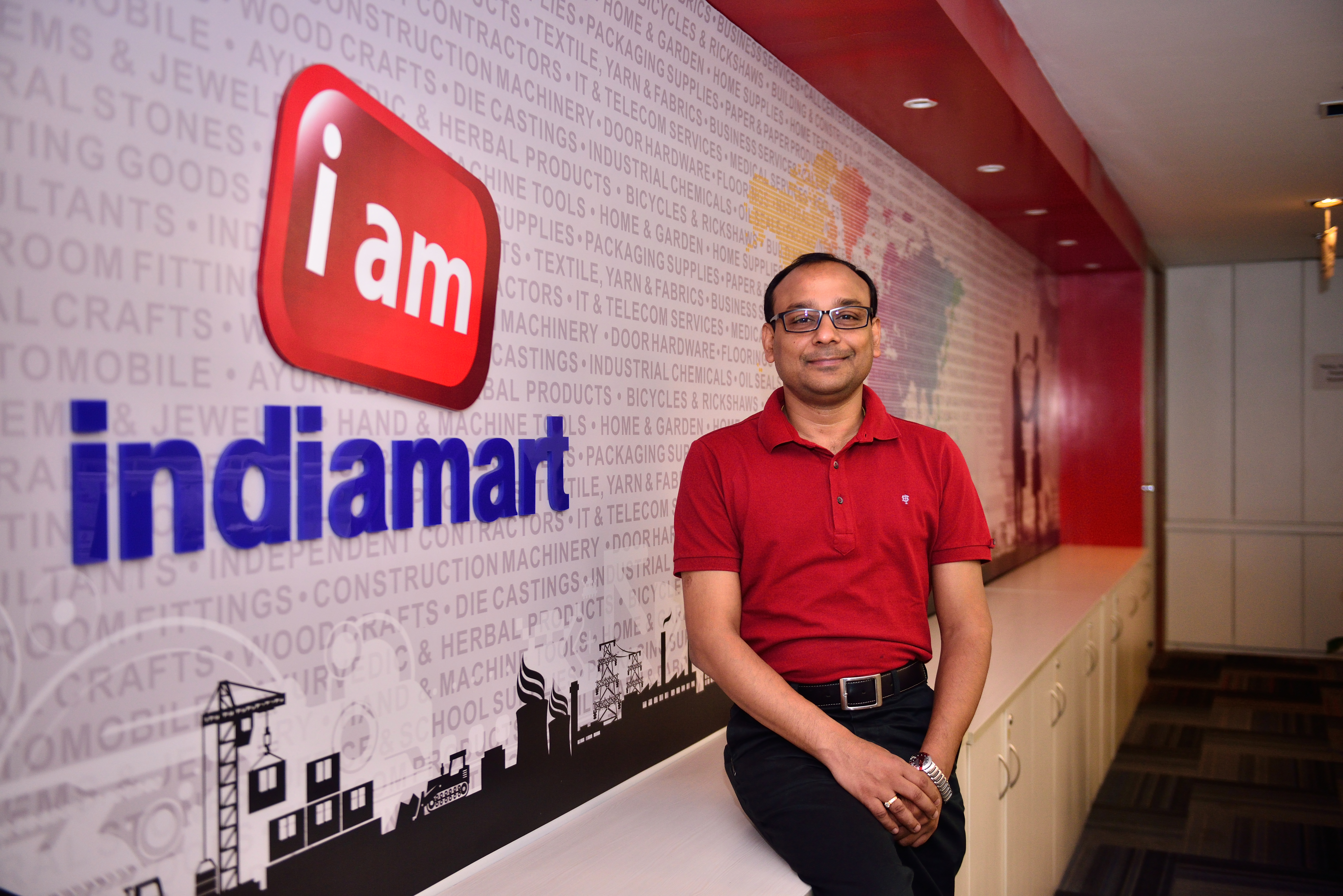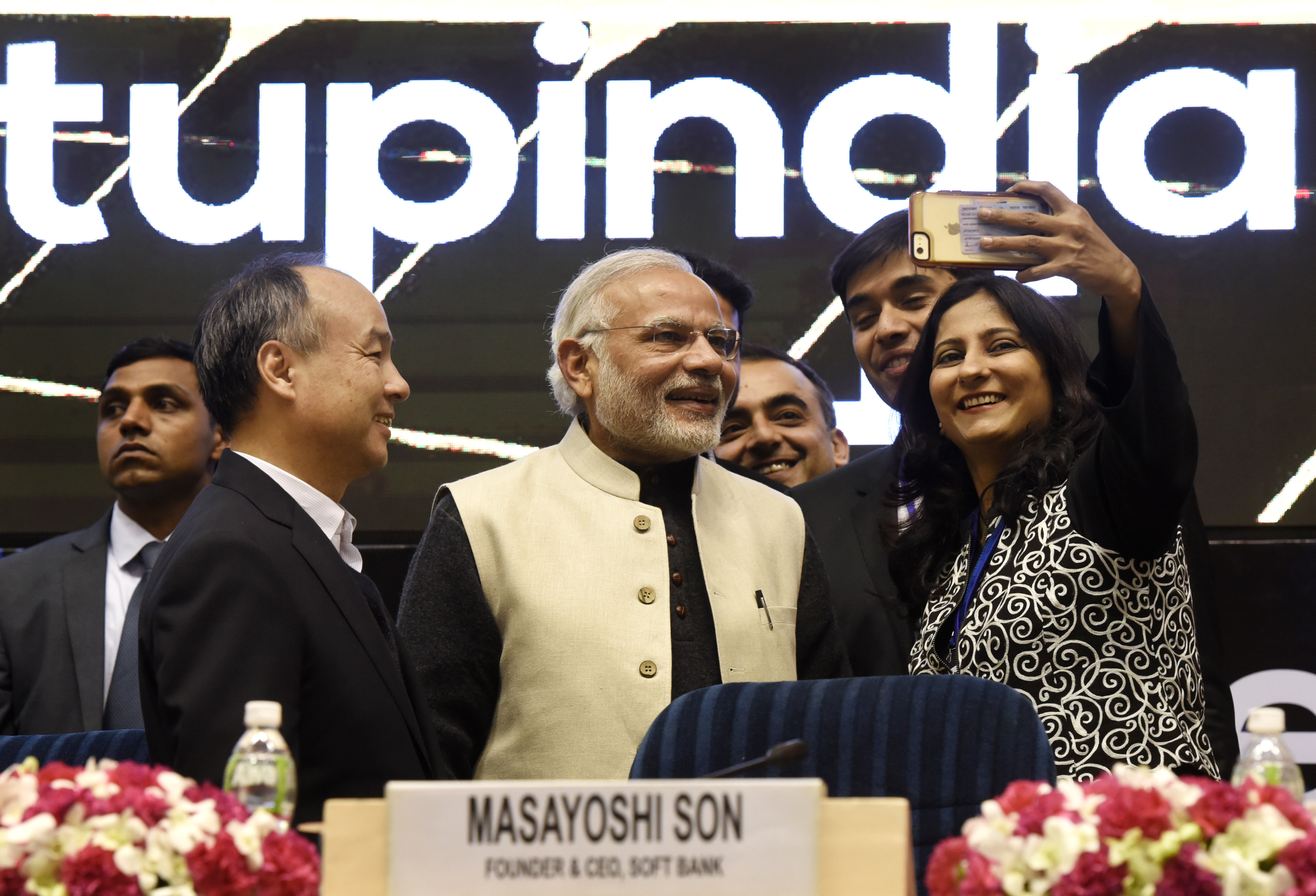
What Does the Acronym “LCD” Stand For? |
|
Think you know the answer? |
|
from How-To Geek https://ift.tt/2XQyDhN

What Does the Acronym “LCD” Stand For? |
|
Think you know the answer? |
|

![]() Leticia Miranda / BuzzFeed News:
Leticia Miranda / BuzzFeed News:
A list of Amazon's known businesses, subsidiaries, and brands, including some that have been discontinued or absorbed into other services — Everything about Amazon in 2019 is inconceivably big: Amazon will make up an estimated 38% of the US e-commerce market this year …

![]() Catalin Cimpanu / ZDNet:
Catalin Cimpanu / ZDNet:
7-Eleven shut down its 7Pay service two days after launch after hackers exploited the app's password reset function for ~900 accounts and made ~$500K in charges — Hackers exploit 7-Eleven's poorly designed password reset function to make unwanted charges on 900 customers' accounts.

![]() Reuters:
Reuters:
Source: CFIUS has cleared SoftBank's $2.25B investment in GM's Cruise after fresh assurances that Cruise's technology would be completely off limits to SoftBank — (Reuters) - Cruise, a U.S. self-driving vehicle company majority-owned by General Motors Co, told Reuters on Friday …

![]() Karlene Lukovitz / MediaPost:
Karlene Lukovitz / MediaPost:
Comscore report: in March, 69.9M US homes had DVRs and 64.1M had smart TVs; monthly viewing hours on smart TVs hit 5.5B, vs. 4.6B for DVRs — Among the many positive indicators for OTT in Comscore's newly released 2019 “The State of OTT” report is the platform's imminent surpassing of DVR tech.
Welcome back to the transcribed edition of the popular podcast Equity. Kate Clark had the hosting reins this week and welcomed Revolution’s Clara Sieg to the studio.
They discussed the trend of investors backing companies from “second-tier” markets like Austin, Atlanta, Denver, Philadelphia, Seattle, etc. Just how do cities become tech hubs? It’s a special kind of recipe, Sieg says. A city must have a great university, or a few, nearby to provide a constant flow of talent. They need some big corporations around for the same reason. They need a healthy community of angel investors ready and willing to get things going.
Sieg: Fundamentally in these second and third tier markets, an idea on the back of a napkin doesn’t get funded, so you really have to bootstrap to a certain degree and prove out really economics before you can unlock capital. Typically the companies that we’re investing in at the Series A, Series B level are a little bit farther along than their brethren would be in the Bay Area or New York.
Valuation expectations are just lower so you own more of a company for a smaller check-in. Inherently, if it’s an exit, that is a better outcome for you and it’s just cheaper to scale companies in those markets. Employee retention is better, cost of living is lower, so the capital required to scale these companies and that’s coming in after you and diluting you is less.
Clark: So when Steve Case founded Revolution, was he coming at it from the perspective of like, “This is obviously good business?” Which it is, to invest in these companies, or was it coming from a perspective of like, “It’s not fair that companies in these areas just don’t have access to capital like we do here in the Bay Area?”
Sieg: Neither, really. I think our investing approach in the early days, and what we still focus on today is what is now commonly referred to as disruption, right? Historically, Zipcar was basically disrupting the rental car market, and it was not really thought of as a great venture-backable opportunity in the early days. That’s obviously changed now, transportation is a huge piece of what venture capitalists focus on, but from day one, we focused on sleepy, incumbent markets where technology can be an enabler of a new business model that makes it better, faster, cheaper for the consumer, or the business that it’s serving, and where you can change the margins in the business to create a market leader that incumbents then either have to own or that can be a large standalone company.
Want more Extra Crunch? Need to read this entire transcript? Then become a member. You can learn more and try it for free.

![]() Nellie Bowles / New York Times:
Nellie Bowles / New York Times:
A look at the growing demand for screen time consultants, parenting coaches getting paid up to $250/hour to help parents wean their kids off devices — Screen consultants are here to help you remember life before smartphones and tablets. (Spoiler: get a dog!)

![]() Klaus Fiala / Forbes:
Klaus Fiala / Forbes:
Profile of Omio, formerly GoEuro, a Berlin-based website and app for booking travel across Europe that has raised nearly $300M in VC funding — This article is the first in a new series: World of Forbes, a collection of stories from our 35 licensed editions and global partners around the planet.

![]() Chris Hamby / New York Times:
Chris Hamby / New York Times:
Experts worry that the upcoming US Census, the first to incorporate digital methods, could fall victim to disinformation campaigns, glitches, and hacking — The government plans to deploy new technology for next year's head count, but risks abound. — In the run-up to the 2020 census …

Object-oriented programming (OOP) is a popular design paradigm in which data and behaviors are encapsulated in such a way that they can be manipulated together.
For anyone with basic Python skills who is new to object-oriented programming, this free ebook is a must-have. Each chapter includes relevant, step-by-step examples and case studies, with the overall ebook forming an in-depth, working program that’s completely free to download.
By the end of the book, you will have learned object-oriented principles in-depth using Python syntax, and will be able to create robust and reliable programs confidently.
Working your way through the ebook, you will be guided “from simple inheritance, one of the most useful tools in the object-oriented programmer’s toolbox, through exception handling to design patterns, an object-oriented way of looking at object-oriented concepts”.
The ebook also shows you how to:
Want to download your free copy? Simply click here to download Object-Oriented Programming from TradePub. You will have to complete a short form to access the ebook, but it’s definitely worth it!
Read the full article: Uncover Modern Python With This Free Ebook!
While “Stranger Things” is one of Netflix’s biggest hits, we’ve remained immune to some of its charms.
On the latest episode of the Original Content podcast, we review the third season of the series — a.k.a. “Stranger Things 3” — giving us an opportunity to hash out our general feelings about the show.
Darrell, in particular, embraced the first season’s mix of ’80s horror and nostalgia, only to feel that season two was little more than a repeat. (There was an episode that branched out, but we’ve all kind of forgotten about the hour devoted to gang of telekinetic teens.) In many ways, “Stranger Things 3” continues that trend, with the residents of Hawkins forced once again to confront a malevolent being from another dimension.
To be fair, the villain known as the Mind Flayer isn’t just doing the same stuff this time. He has a whole new evil plan. But “Strange Things 3” feels freshest when it’s less focused on the sci-fi plot, and more when it’s dealing with the rapidly maturing cast, as many of the younger characters find themselves becoming angsty teenagers.
And yes, we enjoyed all those scenes in the town’s new mall. It seems like an obvious ploy for nostalgia, but the nostalgia works.
In addition to our review, we also discussed Netflix’s plans for a big-budget “Sandman” show, and Jordan shared some of her latest TV recommendations.
You can listen in the player below, subscribe using Apple Podcasts or find us in your podcast player of choice. If you like the show, please let us know by leaving a review on Apple. You can also send us feedback directly. (Or suggest shows and movies for us to review!)
If you’d like to skip ahead, here’s how the episode breaks down:
0:00 Intro
0:35 Sandman on Netflix
13:28 Are You The One
22:35 Years and Years
26:29 Stranger Things review
54:19 Stranger Things spoilers

![]() Benjamin Parkin / Financial Times:
Benjamin Parkin / Financial Times:
B2B ecommerce marketplace IndiaMART closed up 34% on its first day of trading in India on Thursday, after raising ~$70M at a valuation of ~$400M in its IPO — Shares of ecommerce company IndiaMART rose 25 per cent from their issue price on their Thursday debut in what marked the end …
Hello and welcome back to Startups Weekly, a weekend newsletter that dives into the week’s noteworthy startups & venture capital news. Before I jump into today’s topic, let’s catch up a bit. Last week, I struggled to understand WeWork’s growth trajectory. Before that, I noted some thoughts on scooter companies’ struggle to raise new cash.
Remember, you can send me tips, suggestions and feedback to kate.clark@techcrunch.com or on Twitter @KateClarkTweets. If you don’t subscribe to Startups Weekly yet, you can do that here.
What’s on my mind this week? Data. Now that it’s July, I figured it was time for a VC investment data check-in. How much have VCs invested so far this year? Are they finally investing more in female founders? I’ve got answers. (Data source: PitchBook)

Pod Foods gets VC backing to reinvent grocery distribution
DotLab gets $10M to bring endometriosis test to market
Waresix hauls in $14.5M to digitize logistics in Indonesia
Calm gets $27M for its meditation app
Mobi nabs $50M for its new broadcast service
There were so many deep dives this week on TechCrunch ranging from Jony Ive’s influence on Apple written by TechCrunch editor-in-chief Matthew Panzarino, a look at the intense backlash on Superhuman and whether its justified, plus my own look at Fin’s pivot to enterprise analytics platform. Here are the ones I recommend clicking:
Higher Ground Labs is betting tech can help sway the 2020 elections by Jon Shieber
Superbacklash by Matthew Panzarino
From Seed to Series A: Scaling a startup in Latin America by Nathan Lustig
Andrew Kortina and Sam Lessin on Fin’s workplace pivot by Kate Clark
Apple sans Ive by Matthew Panzarino
E.ventures, an early-stage global fund, brought in a fresh $400 million this week, Sony announced a new $185 million fund and…
Filing scoop: @lancearmstrong's Next Ventures plans to raise $75M for its debut fund to invest in sports, fitness, nutrition and wellness startups: https://t.co/gREk0iUuAX
— Kate Clark (@KateClarkTweets) July 5, 2019
When is the right time to pitch VCs for funding?
A compelling pitch deck that quickly and clearly presents your startup as an exceptional investment opportunity is a clear edge when raising a round. But could fundraising be more effective if you knew when to send your pitch deck – the times of year when it’s more likely to be reviewed and when it’s likely to be viewed more often? If we all had a magical algorithm that could predict exactly which investors would review your deck and when, we’d be fundraising geniuses — closing our round faster and with far less effort. No such algorithm exists (at least not yet), but I can share some useful data that offers insights into some of these seasonal fundraising trends, with a few that seem to defy conventional wisdom…
Extra Crunch readers can read the rest of Russ Heddleston’s story here. If you’ve been unsure whether to sign up for TechCrunch’s awesome new subscription service, now is the time.
If you enjoy this newsletter, be sure to check out TechCrunch’s venture-focused podcast, Equity. In this week’s episode, available here, I interview Revolution’s Clara Sieg. We discuss the Rise of the Rest and investing in underrepresented geographies.
Extra Crunch subscribers can read a transcript of each week’s episode every Saturday. Read last week’s episode here and learn more about Extra Crunch here. Equity drops every Friday at 6:00 am PT, so subscribe to us on Apple Podcasts, Overcast, Pocket Casts, Downcast and all the casts.
Away from the limelight of the press and the frenzy of fundraising, a tech startup in India has achieved a feat that few of its peers have managed: going public.
IndiaMART, the country’s largest online platform for selling products directly to businesses, raised nearly $70 million in a rare tech IPO for India this week.
The milestone for the 23-year-old firm is so uncommon for India’s otherwise burgeoning startup ecosystem that, beyond being over-subscribed 36 times, pent up demand for IndiaMART’s stock saw its share price pop 40% on its first day of trading on National Stock Exchange on Thursday — a momentum that it sustained on Friday.
The stock ended Friday at Rs 1326 ($19.3), compared to its issue price of Rs 973 ($14.2).
IndiaMART is the first business-to-business e-commerce firm to go public in India. Its IPO also marks the first listing for a firm following the May reelection of Narendra Modi as the nation’s Prime Minister and the months-long drought that led to it.
Accounting firm EY said it expects more companies from India to follow suit and file for IPO in the coming months.
“Now that national elections are over and favorable results secured, IPO activity is expected to gain momentum in H2 2019 (second half of the year). Companies that had filed their offer documents with the Indian stock markets regulator during H2 2018 and Q1 2019 may finally come to market in the months ahead,” it said in a statement (PDF).
The fireworks of the IPO are just as impressive as IndiaMART’s journey.
The startup was founded in 1996 and for the first 13 years, it focused on exports to customers abroad, but it has since modernized its business following the wave of the internet.
“The thesis was, in 1996, there were no computers or internet in India. The information about India’s market to the West was very limited,” Dinesh Agarwal, co-founder and CEO of IndiaMART, told TechCrunch in an interview.
Until 2008, IndiaMART was fully bootstrapped and profitable with $10 million in revenue, Agarwal said. But things started to dramatically change in that year.
“The Indian rupee became very strong against the dollar, which dwindled the exports business. This is also when the stock market was collapsing in the West, which further hurt the exports demand,” he explained.

Dinesh Agarwal, founder and CEO of IndiaMart.com, poses for a profile shot on July 29, 2015 in Noida, India.
By this time, millions of people in India were on the internet and, with tens of millions of people owning a feature phone, the conditions of the market had begun to shift towards digital.
“This is when we decided to pursue a completely different path. We started to focus on the domestic market,” Agarwal said.
Over the last 10 years, IndiaMART has become the largest e-commerce platform for businesses with about 60% market share, according to research firm KPMG. It handles 97,000 product categories — ranging from machine parts, medical equipment and textile products to cranes — and has amassed 83 million buyers and 5.5 million suppliers from thousands of towns and cities of India.
According to the most recent data published by the Indian government, there are about 50 to 60 million small and medium-sized businesses in India, but only around 10 million of them have any presence on the web. Some 97% of the top 50 companies listed on National Stock Exchange use IndiaMART’s services, Agarwal said.
That’s not to say that the transition to the current day was a straightforward process for the company. IndiaMART tried to capitalize on its early mover advantage with a stream of new services which ultimately didn’t reap the desired rewards.
In 2002, it launched a travel portal for businesses. A year later, it launched a business verification service. It also unveiled a payments platform called ABCPayments. None of these services worked and the firm quickly moved on.
Part of IndiaMART’s success story is its firm leadership and how cautiously it has raised and spent its money, Rajesh Sawhney, a serial angel investor who sits on IndiaMART’s board, told TechCrunch in an interview.
IndiaMART, which employs about 4,000 people, is operationally profitable as of the financial year that ended in March this year. It clocked some $82 million in revenue in the year. It has raised about $32 million to date from Intel Capital, Amadeus Capital Partners and Quona Capital. (Notably, Agarwal said that he rejected offers from VCs for a very long time.)
The firm makes most of its revenue from subscriptions it sells to sellers. A subscription gives a seller a range of benefits including getting featured on storefronts.
4/4. So many Indian small businesses have so much to thank @DineshAgarwal for. And after the iconic IPO, so many Indian entreprenuers will have so much to thank him for – forever unlocking the Indian public markets to current & future generation of Indian internet companies
— Kunal Bahl (@1kunalbahl) July 4, 2019
There are only a handful of internet companies in India that have gone public in the last decade. Online travel service MakeMyTrip went public in 2010. Software firm Intellect Design Arena and e-commerce store Koovs listed in 2014, then travel portal Yatra and e-commerce firm Infibeam followed two years later.
India has consistently attracted billions of dollars in funding in recent years and produced many unicorns. Those include Flipkart, which was acquired by Walmart last year for $16 billion, Paytm, which has raised more than $2 billion to date, Swiggy, which has bagged $1.5 billion to date, Zomato, which has raised $750 million, and relatively new entrant Byju’s — but few of them are nearing profitability and most likely do not see an IPO in their immediate future.
In that context, IndiaMART may set a benchmark for others to follow.
“The fact that we have a homegrown digital commerce business, serving both the urban and smaller cities, and having struggled and been around for so long building a very difficult business and finally going public in the local exchange is a phenomenal story,” Ganesh Rengaswamy, a partner at Quona Capital, told TechCrunch in an interview. “It keeps the story of India tech, to the Western world, going.”
Congratulations @DineshAgarwal for an iconic IPO! @IndiaMART has set an example and hope for all Indian Internet companies looking to go public. Cheers! https://t.co/yJumFjfitS
— Vani Kola (@VaniKola) July 4, 2019
Generally, it is agreed that there are too few IPOs in India and the industry can benefit from momentum and encouragement of high profile and successful public listings.
“There is a firm consensus that in India, markets will prefer only the IPOs of companies that are profitable. And investors in India might not value those companies. Both of these issues are being addressed by IndiaMART,” said Sawhney.
“We need 30 to 40 more IPOs. This will also mean that the stock market here has matured and understands the tech stocks and how it is different from other consumer stocks they usually handle. More tech companies going public would also pave the way for many to explore stock exchanges outside of India.
“Indian market is ready for more tech stocks. We just need to get more companies to go out there,” Sawhney added, although he did predict that it will take a few years before the vast majority of leading startups are ready for the public market.

The Indian government, for its part, this week announced a number of incentives to uplift the “entrepreneurial spirit” in the nation.
Finance minister Nirmala Sitharaman said the government would ease foreign direct investment rules for certain sectors — including e-commerce, food delivery, grocery — and improve the digital payments ecosystem. Sitharaman, who is the first woman to hold this position in India, said the government would also launch a TV program to help startups connect with venture capitalists.
IndiaMART has managed to build a sticky business that compels more than 55% of its customers to come back to the platform and make another transaction within 90 days, Agarwal — its CEO — said. With some 3,500 of its 4,000 employees classified as sales executives, the company is aggressive in its pursuit of new customers. Moving forward, that will remain one of its biggest focuses, according to Agarwal.
“Most of our time still goes into educating MSMEs on how to use the internet. That was a challenge 20 years ago and it remains a challenge today,” he told TechCrunch.
In recent years, IndiaMART has begun to expand its suite of offerings to its business customers in a bid to increase the value they get from its platform and thus increase their reliance on its service.
IndiaMART has built a customer relationship management (CRM) tool so that customers need not rely on spreadsheets or other third-party services.
“We will continue to explore more SaaS offerings and look into solving problems in accounting, invoice management and other areas,” said Agarwal.
The firm also recently started to offer payment facilitation between buyers and sellers through a PayPal-like escrow system.
“This will bridge the trust gap between the entities and improve an MSME’s ability to accept all kinds of payment options including the new age offerings.”
There’s an elephant in the room, however.
A bigger challenge that looms for IndiaMART is the growing interest of Amazon and Walmart in the business-to-business space. Several startups including Udaan — which has raised north of $280 million from DST Global and Lightspeed Venture Partners — have risen up in recent years and are increasingly expanding their operations. Agarwal did not seem much worried, however, telling TechCrunch that he believes that his prime competition is more focused on B2C and serving niche audiences. Besides he has $100 million in the bank himself.
Indeed, as Quona Capital’s Rengaswamy astutely noted, competition is not new for IndiaMART — the company has survived and thrived more than two decades of it.
“Alibaba came and gave up,” he noted.
An important — and unanswered question — that follows the successful IPO is how IndiaMART’s stock will fare over the coming months. A glance to the U.S. — where hyped companies like Uber, Lyft and others have seen prices taper off — shows clearly that early demand and sustained stock performance are not one and the same.
Nobody knows at this point, and the added complexity at play is that the concept of a tech IPO is so uncommon in India that there is no definitive answer to it… yet. But IndiaMART’s biggest achievement may be that it sets the pathway that many others will follow.